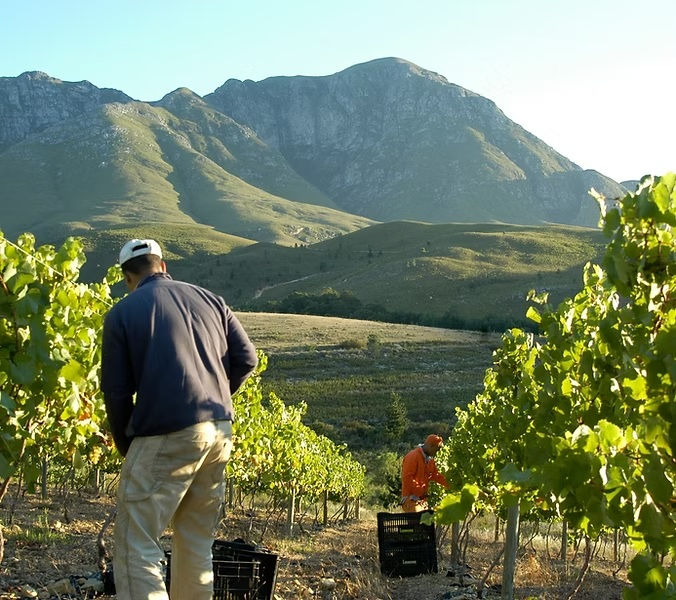Understanding Terroir: The Heart of Great Wine
- James Pymont
- May 28
- 3 min read

Type “terroir” into Google Translate and you won’t get much back. It's one of those elusive French words that doesn’t translate easily—and often gets used (and misused) by wine snobs to confuse or impress. But don’t let that put you off.
Understanding what terroir truly means is one of the most important steps in learning why a wine tastes the way it does—and why it matters.
So, What Is Terroir?
At its core, terroir refers to the natural environment in which a wine is grown. That includes:
Soil type
Topography
Climate
Sun exposure
Underlying rock and mineral content
Altitude and drainage
But more than just listing physical attributes, terroir is best understood as a “sense of place.” It's the invisible fingerprint that makes a wine taste like it came from somewhere—not just anywhere. It’s what separates generic wine from wines of character, and ultimately, of quality.
The best wines—whether they’re $20 or $200—are those that reflect their origins with honesty and clarity. They speak of the vineyard, the slope, the climate that year. They belong to a place.
Terroir vs. International Style Wines
In the last 20 years or so, a wave of “international-style” wines has emerged—bigger, bolder wines made to appeal to global markets and influential critics. These wines often emphasize heavy oak, ripe fruit, and plush texture over terroir.
Frankly? They can be boring.
While famed critic Robert Parker brought much-needed visibility to wine, he also inadvertently influenced many producers to chase a specific style that often suppressed their wine’s unique identity. Fortunately, we’re seeing a shift back toward authenticity—wines that celebrate terroir rather than mask it.
Blends Can Express Terroir Too
It’s a common misconception that only single-vineyard wines can express terroir. Blended wines can do it beautifully—when handled with intention.
Take Bordeaux, for example. Winemakers typically vinify fruit from different vineyard plots separately before blending, carefully crafting a final wine that expresses the essence of the estate’s terroir as a whole.
A great example is Château Montrose in Saint-Estèphe. Over the past 5–10 years, they’ve mastered the art of blending fruit from plots near the estuary with those 100–300 meters inland on the plateau. These areas differ in soil and microclimate, yet together they create a wine of remarkable balance, depth, and identity.
The Ultimate Terroir Wines: Burgundy
If you want a masterclass in terroir, look to Burgundy, lets use Chardonnay from Meursault as a case study.
You could take vines of the same age, from the same winemaker, in the same vineyard—but just 50 meters apart—and get two totally different wines. Take Meursault Charmes for example. The lower part of this Premier Cru often produces richer, more opulent wines, while the upper part leans toward minerality and vibrant acidity.
Both are expressions of the same vineyard—but their distinct micro-locations yield very different personalities.
Winemakers here are like artists, the best imprint their style on the wine whilst at the same time highlighting the Terroir. When they’re in tune with their land, the results can be magical. I remember a conversation with Thomas Collardot at Coquard Loison Fleurot, who told me he still didn’t fully understand a new plot in Nuits-Saint-Georges. He estimated it would take five years to truly get to know the vineyard and make the best wine he could from it. That’s terroir in action—it’s a relationship, not a recipe.
Why Should You Care About Terroir?
Great question. As a wine drinker or collector, how does all this translate into real-world decisions?
Think of it like food. You don't always want to eat the same thing so understanding the differences means you have a diverse collection or perhaps your at a restaurant with the wine list in hand.
You have ordered lobster ravioli. You’ll want a wine that complements the richness but still brings freshness to cut through the fat—maybe a Chardonnay with a bit of oak but enough acidity to stay vibrant.
That wine’s ability to play that role depends on its terroir. Meursault Meix Chavaux with it's limestone or Saint Aubin En Remilly might be perfect. The wine doesn’t just taste good—it makes sense in the moment. That’s what terroir does. It gives wine context, meaning, and depth.
Final Thoughts
You don’t need to memorize soil types or vineyard maps to appreciate terroir. Just start paying attention. Notice how wines from the same region—or even the same producer—can vary. Think about why. Ask questions. Be curious.
Because in the end, terroir is what makes wine endlessly interesting. It's the story behind the glass—and once you start tasting with that lens, you’ll never drink wine the same way again.



Comments